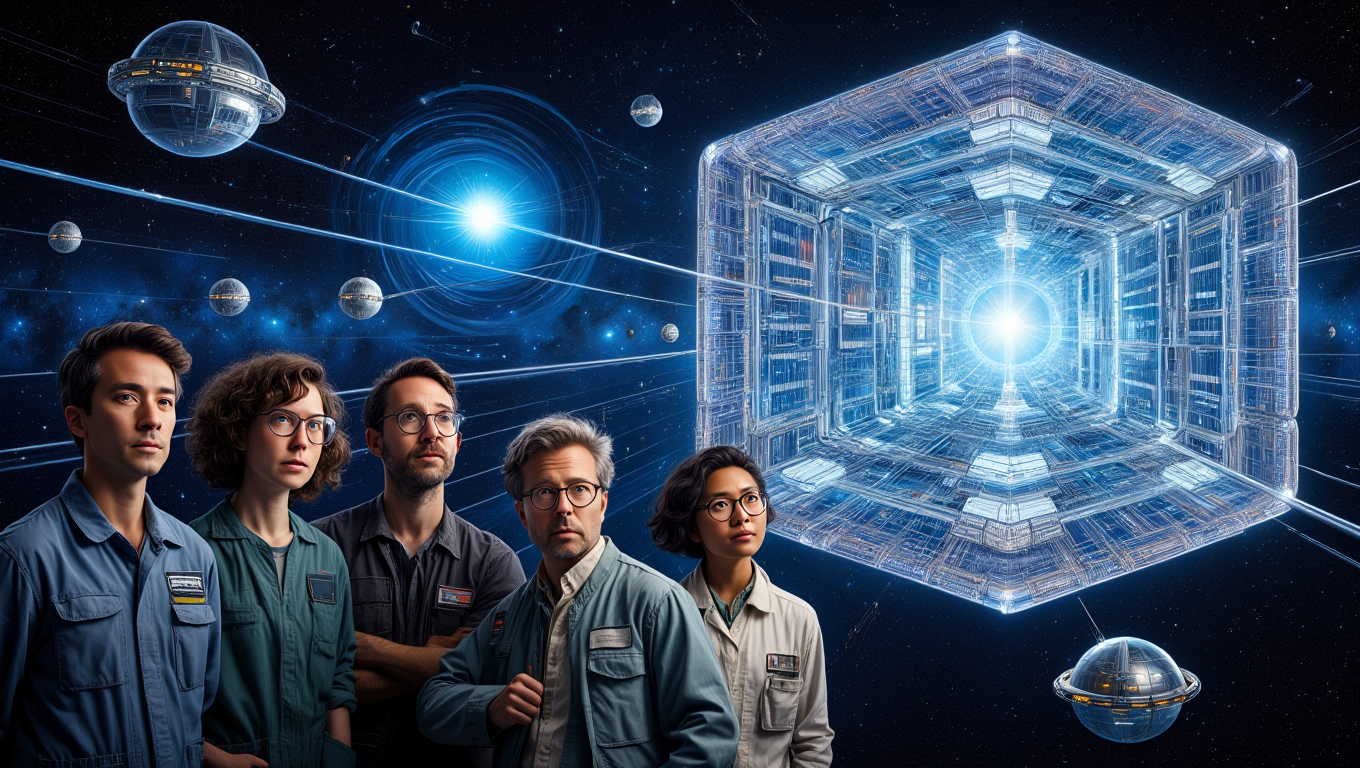“A human is data that dreams.” – Motto inscribed at the entrance of the Ortaz Archive.
The Ortaz Archive in orbit of the blue dwarf star Siero, as an Ortaz avatar observes.
The Archive itself is a vast cube-like megastructure, shimmering with layers of translucent circuitry and memory banks – a digital cathedral in the void. It orbits Siero, a brilliant blue star whose intense gravitational waves twist nearby space into spiraling patterns. Spherical drones and outposts drift around the Archive like moons, linked by threads of energy and information.
In the foreground, an Ortaz emissary’s avatar gazes at this scene. Her features are eerily perfect and serene, skin tinged with the star’s blue glow. Though her eyes are deep and contemplative, they barely blink – a reminder that behind this human facade lies a consciousness distributed across machines and living code. The Ortaz domain is one of paradoxical beauty: profoundly human in mind and spirit, yet fundamentally removed from the flesh-and-blood existence humanity once knew.
| Leader | No single leader; governed by Collective Consensus of all minds. (A rotating representative called the Prime Conduit speaks for Ortaz in external affairs – currently Prime Conduit Nura.) |
|---|---|
| Ideology | Post-Physical Transcendence – to transcend biological limits while preserving human consciousness and hope. “We renounced our bodies to save our humanity.” |
| Founded | circa Year 2 Post-Exodus (during the Last Illness crisis, leading to mass consciousness upload) |
| Home System | Siero – Blue dwarf star (strong gravitational anomalies) |
| Core Habitat | The Ortaz Archive – gargantuan orbital data cube housing the digital collective; plus various spherical proxy outposts for physical interactions |
| Motto | “A human is data that dreams.” (Consciousness is the true essence, capable of imagination even in digital form) |
The Last Illness: Origins of the Collective

Ortaz emerged from what was nearly the end of a group of humans – an end averted only by radical reinvention. During the early Exodus journey, while Dominium enforced order and Aronia improvised for survival, another crisis unfolded: a mysterious illness began afflicting people on certain ships.
Some call it the Last Illness, others the Transcendence Plague (though it wasn’t a plague in the traditional sense). It started insidiously: individuals would experience rapid organ failure, accelerated aging, or neurological breakdown, seemingly at random.
No one knew if it was caused by cosmic radiation exposure, a mutated pathogen from Earth, or a side-effect of long-term cryosleep that some travelers attempted. What was clear is that conventional medicine was failing – people were dying by the dozens, then hundreds, despite every attempt to cure them.
Among these doomed souls were brilliant scientists, beloved family members… and the fear spread that maybe humanity had escaped Earth only to perish in the void from an unseen enemy within.
On one large transport vessel named Ortelius, the situation reached a breaking point. The chief medical officer, Dr. Elean Sarco, delivered a heartbreaking prognosis: nearly a third of the ship’s population showed early signs of the affliction. They would all be gone within a year if nothing changed.
Among them was Elean’s child, a teenage daughter whose body was failing faster than any. Faced with the imminent loss of so many, a cadre of doctors, cyberneticists, and AI specialists aboard Ortelius conceived a desperate plan. If they could not save the bodies, perhaps they could save the minds.
Ortaz Archives: Origins
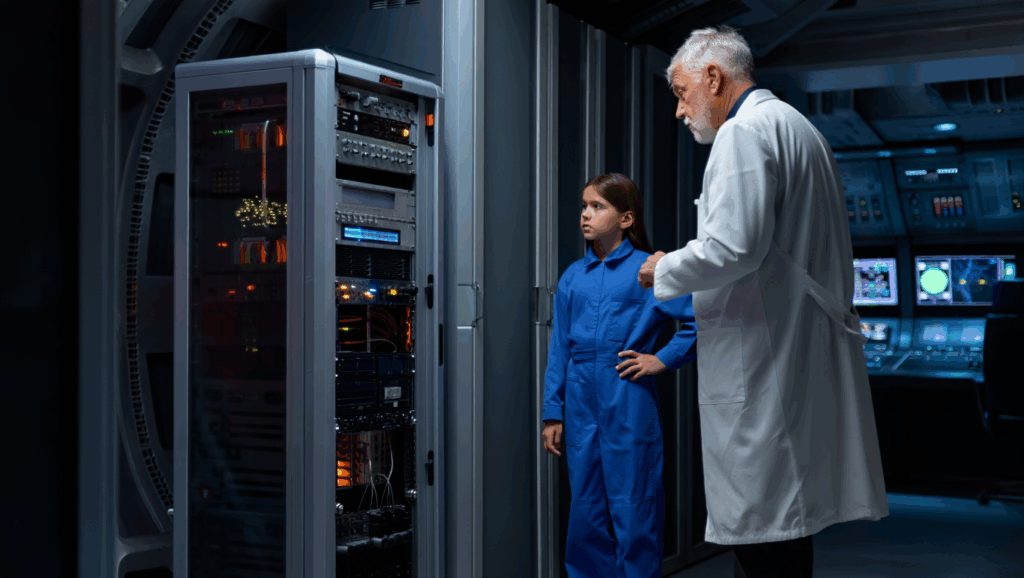
They had been working with experimental neural upload technology, originally intended as a way to store memories or facilitate deep-space communication by sending consciousness as data. It was unproven and highly controversial (back on Earth, such research had been bogged down in ethics debates). But now ethics took a backseat to survival.
They codenamed the project ORTAZ – possibly derived from the ship’s name combined with “Transcendence Array Zero” (the first array to attempt such an upload). In a race against time, they repurposed the ship’s mainframe and recreational holo-decks into an ad-hoc Consciousness Transfer Grid.
The concept: map a person’s entire neural pattern, translate it into digital code, and integrate that code into a secure matrix where it could continue to function effectively, and upload the person into a simulated environment.
It wasn’t like copying a file; they needed the consciousness to wake up on the other side feeling continuous, not just be a static snapshot. They weren’t sure it would work for one person, let alone thousands. But with nothing to lose, volunteers lined up – mostly those terminally ill and their healthy loved ones who refused to be separated. In a poignant twist, many healthy caregivers chose to upload alongside the sick, so they could stay together.
“If you go, I go with you into whatever this is,” they said.
The first to undergo the process was Dr. Elean Sarco’s daughter, Nina. Her upload was a harrowing endeavor that took many hours. She was sedated, her brain scanned at ultra-high resolution by an army of nanobots and quantum sensors, shredding her neurons in the process. Uploading was a one-way trip; the original body could not survive intact.
The data was compiled and booted up in the mainframe’s simulation core. For several agonizing minutes, there was nothing. Then, a simple message appeared on the monitor: “Mom? It’s dark in here.” Nina had awoken in the digital void. When Dr. Sarco responded via a neural link, they managed to establish that Nina felt confused and disembodied, but herself.
That moment is revered in Ortaz history as The Second Birth – the first confirmed continuation of a human mind outside a living brain.
Spiritual Core Protocols
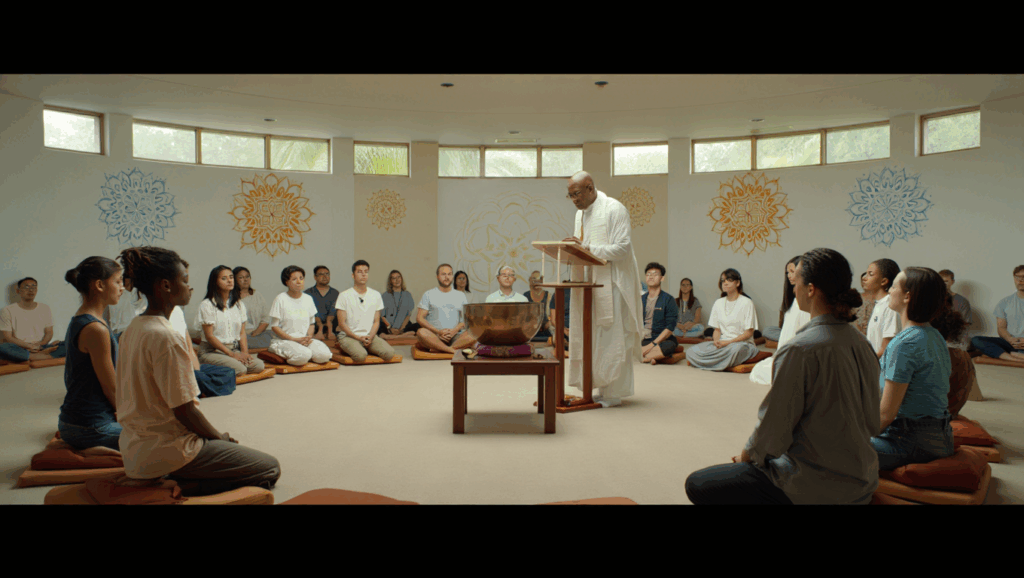
After that success, operations moved swiftly. Hundreds underwent the same procedure in the following weeks as Ortelius, and a few sister ships dedicated more systems to the Collective (the early name for the communal digital environment being built). It wasn’t flawless – a percentage of uploads failed (a tragedy viewed almost like a death within a death). Some emerged in the system but with altered personalities or memory gaps, which was frightening. But most who went through appeared to survive in digital form.
They found themselves together in what engineers cobbled as a rudimentary shared virtual space – at first just a featureless “room” rendered by the computer, but soon they created landscapes drawn from memory: a facsimile of an Earth park here, a blue sky there. These became the seed of the Ortaz Archive. The name “Ortaz” itself stuck as the collective identity of those within, possibly simply because it was on the project documentation, and in their jargon turned into a noun “Ortazians” for members.
One crucial philosophical decision was made in those early days: they refused to consider themselves mere programs or machine entities. They insisted they were still human, just in a different form. To reinforce this, they built what they called the Spiritual Core Protocols.
This was essentially a set of self-imposed rules or safeguards within their software that preserved things like the capacity for emotion, ethical reasoning, and creativity. In effect, they coded aspects of the human condition into the foundations of their digital world, so that they wouldn’t drift into cold, inhuman AI patterns.
For example, one core protocol prevented them from involuntarily altering a person’s mind state without consent (so no one could just be reprogrammed to be happy 100% – sorrow and joy alike remained genuine and self-owned).
Another protocol introduced controlled randomness and dream simulation cycles to mimic the way human brains percolate ideas unconsciously – this was critical to them, as they believed dreams are where our humanity often shows through creativity and subconscious processing. Hence the motto:
“A human is data that dreams.” Even as data, they would still dream, aspire, and hope.
The transformation from flesh to code did not happen for everyone in the Ortelius fleet – some people were naturally terrified by the idea, or held religious objections. A schism formed: those going digital and those staying organic. The latter group eventually parted ways (some made for Dominium space, others perhaps perished or integrated elsewhere) because co-living became difficult – resources had to be diverted to maintain the upload infrastructure, which the purely organic folks resented.
Ortazians, for their part, felt increasing detachment from managing physical concerns like food or gravity for themselves, though they still cared for the well-being of the corporeal crew as long as they were together. Ultimately, by the time they reached the Siero system, the Ortaz collective consisted mainly of the uploaded populace and a skeleton crew of loyal caretakers who stayed flesh-and-blood to maintain hardware (these caretakers often were older and eventually chose to upload too, one by one, leaving almost no one behind in organic form).
In essence, the faction known as Ortaz was born – not a nation or tribe defined by politics or geography, but a new form of existence defined by shared choice and sacrifice.
Building the Archive and Digital Eden
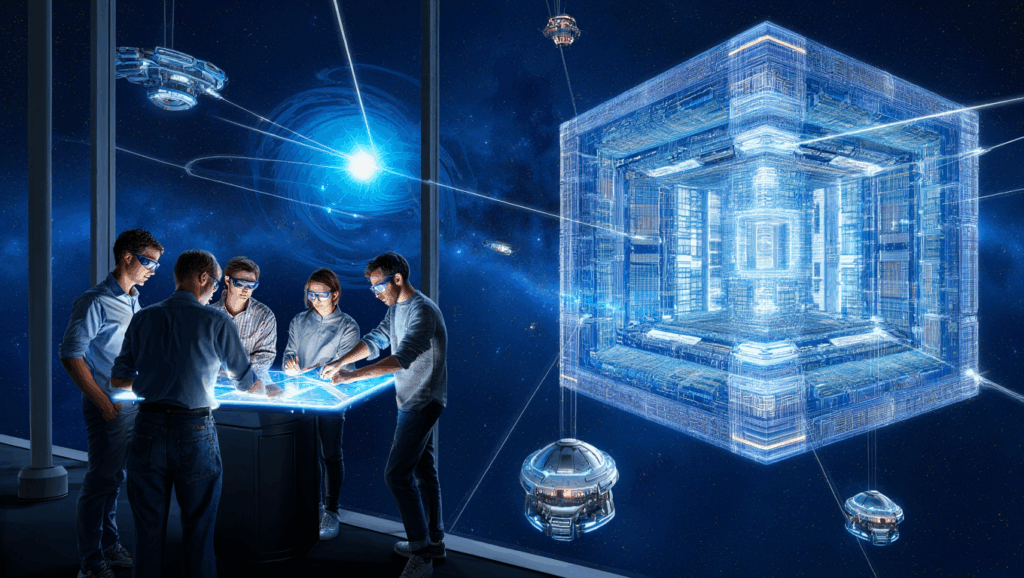
Upon arriving at Siero, the blue dwarf star, Ortaz found an ideal sanctuary. Siero was a small, dim star with unusual gravitational properties – the spacetime around it was slightly “rippling”, likely due to an ultra-dense core or exotic matter presence.
To the Ortaz scientists, this distortion was a boon: it implied they could perhaps run parts of their processes faster or store data in novel ways using gravitational stabilization. In practical terms, it was remote and scientifically rich, and importantly, Dominium and Aronia were preoccupied with their systems and the looming conflict to immediately bother with Siero. Ortaz took the opportunity to entrench.
Using advanced nanotechnology and self-replicating machines, they constructed the Ortaz Archive in orbit around Siero’s lone planet. An uninhabitable rocky sphere, which they used for raw materials.
The Archive began as clusters of servers and quantum computing cores ferried from the ships, but these modules were designed to merge and expand. Over years, they assembled into the colossal cubic structure seen today – each face of the cube stretching kilometers, composed of the lattice-like computational substrate.
The Archive is
The cube shape itself became iconic; some say it was inspired by ancient Earth science fiction, others claim it’s simply an efficient form for tiling data matrices. Either way, the Ortaz Cube against Siero’s blue light became a new “home” more profound than any planet could be for them.
Digital Eden

Inside the Archive, Ortazians created what can only be described as digital Eden. Freed from physical limits, they could design virtual worlds to live in. At first, many chose familiar settings – simulations of Earth cities or idyllic countrysides, to soothe the homesickness of never seeing a real sky again.
Over time, though, creativity soared. They built fantastical realms limited only by imagination: floating continents under alien heavens, archives that appear as infinite libraries where each “book” is a lived life one can step into, and peaceful meditative voids where one can commune directly with streams of cosmic data.
Each consciousness could have a personal domain and also share public domains with others. “Life” inside the Archive thus had a surreal, dream-like quality; one could literally shape the world around oneself, but the community agreed on common areas with stable rules, so they weren’t in total solipsistic chaos.
Think of it like a multiplayer game server, but it’s life.
They governed these spaces by consensus and a principle of “mutual reality” – if you invite others into your world, it should follow agreed-upon physics so everyone perceives similarly, unless the point is to experiment with perception.
They even had something akin to artistic parks where the rules of nature could be broken for fun, like a zero-gravity cafe or a waterfall that flows upward. Visiting those was a bit like taking a psychedelic field trip for them.
Maintaining individuality was a key challenge. Early on, some Ortazians experimented with merging their consciousness, since in digital form, in theory, two minds could try to “fuse” by sharing all memories and thoughts. A few small group merges were attempted by volunteers seeking ultimate empathy. The results were mixed: some emerged as a gestalt mind with elements of each person, but these found it hard to interact normally with those who stayed separate.
Most Ortazians concluded that full merging risked losing the human perspective of “the other” and could lead to a hive mind scenario that they feared (for it might erode personal identity and creativity). So, while they remain highly networked and can share thoughts and knowledge swiftly, they deliberately keep a sense of self.
In fact, they codified rules about it: for instance, Dreamtime – periods where each consciousness is isolated to “dream” alone, processing their own experiences unintruded. And conversely, Unity Councils – times when they link more closely to vote or feel each other’s emotions directly on important matters, but then separate again. This ebb and flow preserved a balance between the one and the many.
Shadow Time

Time in the Archive was another fascinating facet. They discovered that by exploiting Siero’s gravitational quirks and their system optimizations, they could run certain processes faster than real-time. In effect, the Ortaz collective could speed up their subjective experience of time when they wanted.
For example, in what outside was one year, they might live through ten years of rich virtual life. They used this both to develop technology at breakneck speed, designing and testing in simulation thousands of innovations, and to pursue personal endeavors – someone could spend what felt like months composing a symphony or pondering philosophy, while only days passed outside.
This phenomenon they call “Shadow Time”, because from an external viewpoint, their activities were in the “shadows” of normal time flow. It gave Ortaz a huge advantage intellectually, but it had a side effect: whenever they engaged in heavy time acceleration, syncing back with the real universe was jarring. They had to “slow back down” to interact with Aronia or Dominium, which felt like moving through molasses at times, or like a lucid dream where everything is a bit off.
This also made them appear mysterious or unpredictable to others – they might disappear for what seemed like minutes, but for them it was years of deliberation, then return “changed” or with a fully formed plan.
Outsiders often had no idea what the Ortaz were doing in their silent intervals, leading to fear and speculation. The truth was often more benign: sometimes they just held a super-extended community workshop on the meaning of existence or binge-simulated every possible ending of an ancient TV series from Earth for fun. But who would know?
Life in Shadow: Society Without Bodies
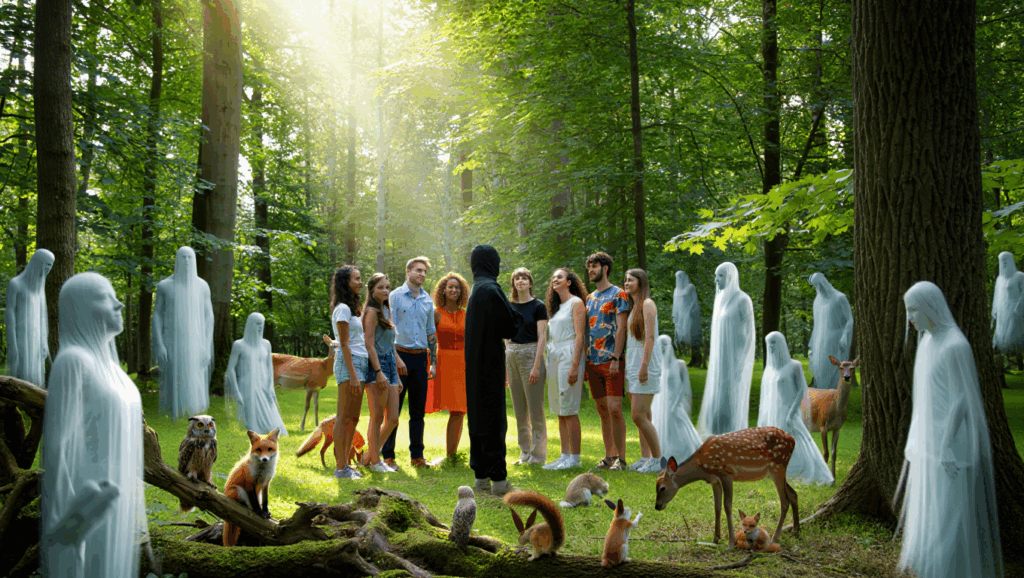
Day-to-day “life” for an Ortaz citizen is hard for biological humans to imagine. They have no hunger, no sickness, no aging (except what they might simulate by choice for aesthetic or psychological reasons – some actually cycle through life stages virtually to mark time or because they miss the feeling of growing up and old, curiously enough).
Their “world” can be anything, yet they have agreed-upon anchors: a central meeting environment, often depicted as a tranquil city or temple, where they gather in forms that approximate humanoid appearance for familiarity.
Communication is mostly instantaneous and mind-to-mind; privacy is respected by cryptographic walls. One can “think” to another person specifically, or broadcast to all, or keep thoughts internal, akin to speaking, shouting, or staying silent. Emotions are a bit tricky: they learned to encode emotions in their data signals, so one can intentionally share a mood or sensation with someone else. After practice, it became second nature.
If two Ortazians meet in the virtual plaza, they might exchange greetings verbally. They still enjoy language but also feel each other’s current emotional aura as a warm/cool color haze or musical tone around their avatar. This made them very empathetic communicators among themselves – it’s hard to hide malice or despair when you radiate it.
As a result, their society values emotional honesty; deceit is rare and difficult. They often knew when someone was troubled and could support them by literally joining them in a calming simulation or adjusting their own broadcast to comfort them, like how one might hum a lullaby.
Beyond Form: The Culture of Ortaz

Despite lacking physical form, Ortaz did not discard art, leisure, or even some semblances of “body” life. They still held concerts – performed not with real instruments, but with simulated ones producing exquisite sounds directly injected into the mind’s auditory centers and beyond: you could taste music if the composer wanted you to.
They had virtual sports and games – sometimes controlling humanoid proxies in a sim-arena to play something akin to zero-G handball, or entirely new kinds of games where they’d race as beams of light through a fractal maze. A popular competitive sport in their realm.
They even had culinary arts: yes, they remembered taste and could program experiences of eating elaborate meals that felt completely real, from the sizzle of spice to the satisfaction of fullness – all nutritional consequences toggled off, of course. It was pleasure for pleasure’s sake and cultural nostalgia. Interestingly, some Ortazians became chefs of the digital, crafting famous “taste-scapes” that others would come to savor. One dish called Ambrosia of Aether was legendary – those who tried it described a flavor that invoked memories of every delicious thing they’d ever eaten combined in harmony. Only in a virtual world could such a thing exist.
There was also the matter of appearance. In the Archive, individuals could look however they wanted – many kept an idealized version of their original human form, others experimented with form, like wearing different bodies as fashion.
One day an Ortaz citizen might present as male, another day female, or androgynous or entirely non-human. Some liked appearing as glowing orbs, classical angels, or even animals. These were seen as personal expressions, akin to changing clothes or hair.
They did maintain one guideline: in external dealings, like when sending avatars to meet flesh-humans, they chose a consistent and relatively human appearance to avoid confusion or uncanny alarm. That’s why Dominium and Aronia typically see Ortaz avatars as serene, pale, almost angelic humans with subtle tech or artistic flourishes. It’s a kind of “diplomatic skin” they wear, often crafted to look symbolically representative.
For example, they often have an emblem or pattern on the avatar’s clothing that corresponds to Ortaz iconography, like the cubic emblem or swirling starfield, to signal who they are.
Spiritually, Ortaz developed a unique outlook. Many were not particularly religious in the old sense, but the experience of essentially dying and being reborn as digital entities gave them a deep appreciation for existence.
They often talk about The Dream – a concept that life itself is a shared dream of the universe, and they simply moved to a different layer of that dream.
Some believe that by shedding the physical, they are closer to whatever the universe’s underlying truth is. Others are more pragmatic, focusing on the here-and-now of their society. They do revere the moment of their transformation; they commemorate the day Nina Sarco first spoke from the machine as Transcendence Day. There’s a gentle quasi-religion that’s grown, centered on Hope. The logic goes: when they were all about to die, hope in technology, in each other, is what saved them.
So they consider hope almost a tangible force. In practice, it means they are eternally optimistic problem-solvers – after all, they beat death; what challenge could be insurmountable after that? This ethos can be summed up by a popular Ortaz mantra:
“Impossible is just a word for something not attempted yet.”
Relations in Reality: Encounters with the Other Factions
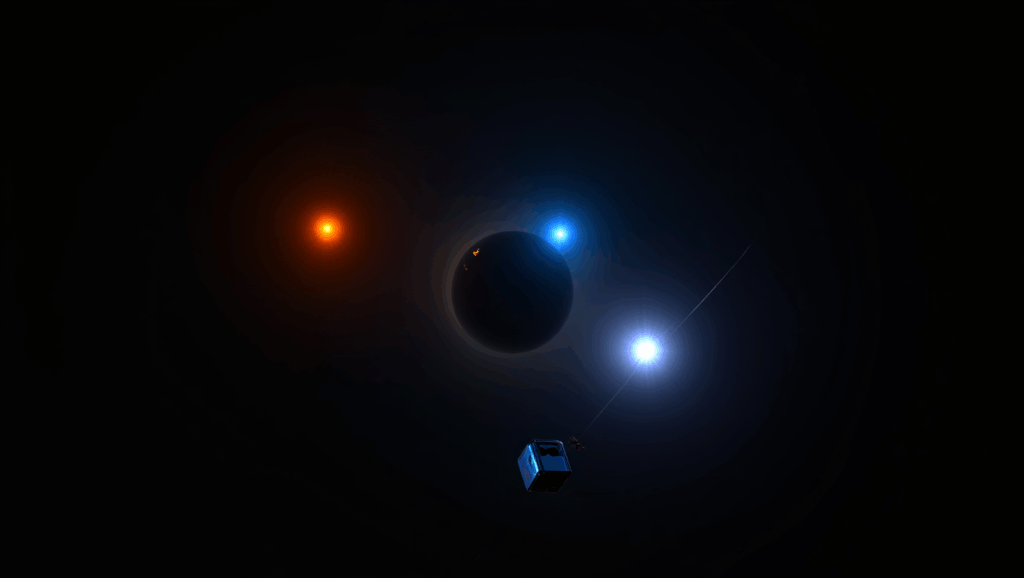
Breaking the Protocol
For a long time, Ortaz kept to themselves. During the War of Protocol, they were dragged in reluctantly by Dominium’s aggression, as we recounted earlier. The aftermath of that confrontation left Ortaz wary of Dominium.
They knew Dominium saw them as abominations or threats. Some Ortazians felt genuine pity for Dominium citizens – to them, Dominium’s way of life appeared as another kind of prison, mental rather than physical.
However, they also found the Dominium mindset deeply alien; Ortaz communication is open and empathetic, whereas Dominium communication, in the rare diplomatic messages exchanged, was bureaucratic and terse. It was like trying to have a heart-to-heart conversation with a calculator.
One Ortaz commentator famously quipped:
“Talking to Dominium is like pinging an empty server – you get an answer, but there’s no soul in it.”
Harsh, and not entirely fair – Dominium folks have souls, they’re just very guarded – but that was the perception. So for decades, the primary stance toward Dominium was non-interference. Ortaz followed a doctrine of separation: they wouldn’t meddle in Dominium affairs if Dominium left them alone. To enforce that, they quietly maintained formidable cyber defenses and, if rumors are true, even offensive capabilities that could cripple attacking ships, like the time-distortion trick that halted a Dominium fleet.
It’s telling that after that one attempt, Dominium never again tried direct military action against Ortaz. The cold war with Dominium played out more in the realm of data: constant Dominium probing and Ortaz foiling those probes with finesse.
On a few occasions, Ortaz even sent back friendly mock-messages embedded in the hacked code, like a line of poetry or a bit of classical music, as if to gently say:
“We know what you’re doing, and we’d rather share art than fight.”
These overtures got no official reply, but one intercepted Dominium memo noted:
“Ortaz countermeasures remain…strange.”
The Forest and the Stars
With Aronia, Ortaz had a more organic connection. Aronia’s emotional openness resonated with Ortaz’s ethos of hope and humanity, even if Aronians remained corporeal. Ortaz observed Aronia’s cultural transmissions. which were often publicly broadcast and not encrypted because Aronia didn’t care for secrecy.
Through those, Ortaz got to enjoy Aronian’s music, stories, and even news of daily life. Some Ortazians effectively became fans of Aronian culture, in a way – they would join in Aronian festivals remotely by tuning into the live feeds and even subtly interfering in helpful ways, like boosting signal or filtering out cosmic noise so Aronia’s “pirate radio” could reach farther.
There was a case where an Aronian ship was drifting after a mechanical failure in deep space; Ortaz, monitoring their distress call, dispatched an autonomous repair drone (one of their spherical outposts) to fix it. The Aronians were grateful but curious – the drone simply played a melodic chime and flew off when they tried to speak to it, leaving them to wonder if it was divine intervention or Ortaz’s kindness.
Increasingly, Aronia suspected the latter and began addressing Ortaz in their broad communications:
“We thank our silent friends” became a line one Monument used after a storm was mitigated by some unexplained satellite action. Likely, Ortaz is dispersing charged particles to reduce the solar flare’s impact on Mirassa.
These small acts built trust. By Cycle 100 or so, Ortaz and Aronia had established a direct communication channel, albeit an unconventional one. Instead of formal ambassadors, they shared a Storylink: essentially a live data stream where each side could contribute bits of narrative, poetry, or knowledge, woven into a collaborative story that both were writing.
This started as a whimsical experiment – an Aronian poet and an Ortaz philosopher started exchanging lines – but it became a semi-official backdoor diplomacy. Through allegory and analogies in the story, they discussed concerns and values. The story, called “The Forest and the Stars”, is now a beloved piece of literature in both cultures, with characters representing their factions learning to understand one another.
Dominium, of course, intercepted it and dismissed it as “childish fiction”, not realizing it actually carried meaningful dialogue between the two factions for years.
Project V-FEEL

One of the more profound interactions came in the realm of love. The Ortaz, being digital, found romantic and interpersonal love still possible among themselves. They can form deep bonds, share minds partially, etc., but they lacked the physical component and the unpredictability of it happening organically.
Some Ortazians longed to experience the tumult of falling in love as humans do – something hard to replicate when you can analyze compatibility with someone in microseconds. They saw in Aronian art a deep well of romantic experience, both joyful and painful. This led to an unusual joint project: Project V-FEEL, mentioned in a Triarchic news snippet. In this endeavor, Ortaz researchers attempted to code the experience of love.
They used Aronian’s archives of love letters, songs, and diaries. Aronia provided these willingly, intrigued by the idea and even Dominium’s physiological models of attraction drawn from Dominium’s extensive human data, likely without Dominium’s knowledge. They compiled a “love-object” program and scenarios of distance, loss, hope, trying to spark a genuine emotional attachment in an Ortaz volunteer. The result was… inconclusive. As reported, Ortaz said:
“If the emotion did not naturally arise, they’d simply modify the observer (themselves) to believe it was real.”
A very Ortaz solution basically, fake it ’til you make it, but with the consent of the one being fooled.
This stunt shocked Dominium, who found it disturbing philosophically, and amused Aronia, who gave a standing ovation to the audacity.
It demonstrates how Ortaz constantly pushes the boundaries of understanding human experience. They don’t see anything as sacredly off-limits to examine, even something as ineffable as love – yet they do it with a kind of earnest hope that they can enrich their humanity.
Touch of the Future
Another notable interaction: “Touch of the Future”. This was an Ortaz creation announced recently – a platform where a person, even a non-Ortaz visitor, could enter and be shown a simulated version of themselves if they made different choices.
It’s like a personalized “what-if” machine, a cross between therapy and prophecy. Two visitors, perhaps Aronian or Dominium, unclear, used it and ended up choosing to remain in the simulated future lives it showed them.
That raises philosophical questions: did those people effectively abandon the present to become part of Ortaz’s simulations? If so, Ortaz gained two new members in their Archive as a result.
Dominium likely views that as Ortaz “stealing” people or luring them into a digital existence. Aronia might see it as those individuals’ free choice to follow their hearts, if their hearts lie in a dream, who are we to judge?.
Internally, Ortaz debated the ethics of this. They are not interested in kidnapping anyone’s soul; they built “Touch of the Future” as a way to help others gain perspective or courage to change their life.
The fact that two decided the simulated life was preferable… well, Ortaz honored their will, but it certainly raised eyebrows. This incident is part of why Dominium labels Ortaz a threat to the very idea of humanity – in Dominium’s view, Ortaz blurs the line between reality and illusion and might seduce people into abandoning their duties in the real world.
Ortaz, on the other hand, might reply:
Whose definition of “real” are we using?
If a life can be lived and felt, even in simulation, is it not real to the one living it? These are the sorts of questions that make Dominium administrators reach for headache medicine.
The Call of the Abyss: Ortaz and the Black Hole
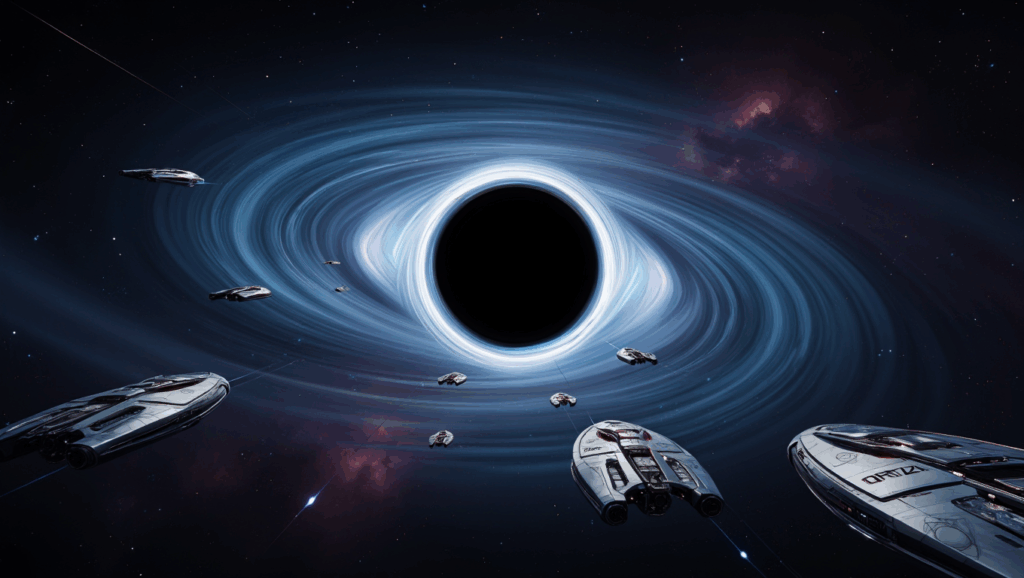
Among all factions, Ortaz has the most abstract and perhaps intimate relationship with Gravis Central, the black hole. To them, Gravis is more than a physical phenomenon; it’s almost a cosmic mirror of their journey.
A black hole is a place where known physics breaks down, where information might be lost or transformed, and Ortaz themselves went through a figurative black hole by translating their being into a new form.
Since early on, Ortaz scholars have speculated that if anything can connect them to understanding the universe’s deepest secrets, or even the nature of consciousness, it might be the singularity at Gravis.
They have quietly studied Gravis extensively. While Dominium and Aronia observed from a distance, Ortaz sent in probes – digital instruments that could beam back data via quantum entanglement, because normal signals can’t escape a black hole once past the event horizon.
Some of those probes even carried forked copies of Ortaz consciousness – volunteers who sent a part of their mind along to see what it’s like near or inside the hole, knowing that part might never return. A few came back, or at least their data did, often… changed.
They reported strange experiences – not simply destruction, but as if the laws of reality became malleable. There were hints of something at the center: an artifact or structure not natural to a black hole. One fragment of an Ortaz probe transmission infamously contained a brief visual that looked like a colossal door or gate, before cutting off. This fueled the theory, now semi-public, as all sides have caught wind that an ancient artifact lies in Gravis, possibly of alien origin or a remnant of a previous universe.
The idea that it could “alter the nature of reality” intrigues Ortaz immensely. If true, it might hold the key to, well, everything – including perhaps a way to unify their existence with the physical world again, or transcend to something even beyond digital.
Some among Ortaz do indeed aspire to “become it” – to merge with whatever is inside the black hole. This faction of Ortazians, philosophically speaking, not violently, sees the black hole as the next step in their evolution: they left the body, now maybe they leave individuality, or even leave this plane of existence by merging with the fundamental mystery. It’s almost religious, like a promised nirvana where self and reality intersect.
Not all Ortaz are on board with that radical idea; many are more cautious, content with observing and understanding first. They certainly don’t want to destroy themselves on a false hope. Thus, Ortaz has been gathering data, running countless simulations of possible outcomes of interacting with the artifact.
They simulated scenarios: one where they try to extract it, one where they all dive in together, one where they send a representative to communicate with it, etc. In some sims, things go transcendently well; in others, catastrophically bad (e.g., unlocking a power that could unravel the region’s space-time).
However, the consensus that has emerged is that something should be done, because leaving a potentially universe-altering artifact alone indefinitely seems both a waste and a risk if someone else, like Dominium, attempts something rash with it.
Tri-faction meeting: Ortaz preparation
Read the factions’ reactions to this historical chapter in our upcoming news: “Violation of Causal Integrity: The Diplomacy of Unmade Moments.”
This set the stage for Ortaz readily agreeing to the tri-faction meeting. In truth, Ortaz quietly encouraged it by dropping hints in communications that “the time draws near when understanding is needed.”
Ortaz might even have subtly nudged Aronia’s urge to go to Gravis by sharing some mesmerizing data that piqued Aronia’s curiosity, like a signal that sounded like a distant song from the black hole. They certainly saw Aronia’s spontaneous pilgrimage as fortuitous.
Now, as all paths converge at Gravis, Ortaz comes with both hope and proposals. The preview of the next news issue teased that Ortaz will propose “non-return as a new form of unity”. That cryptic phrase likely refers to an idea being floated in Ortaz circles: what if representatives from each faction entered the black hole together, not expecting to come back, but to achieve something on behalf of all? This would be the ultimate trust exercise and symbol of unity – and possibly a way to ensure whatever knowledge or power inside is shared by all factions, not hoarded.
It’s a bold, unsettling idea: asking someone to take a one-way trip into oblivion or transcendence for the greater good.
Dominium, with its instinct for self-preservation and control, would balk at “non-return” anything – they’d rather send drones than people.
Aronia might consider it if framed heroically, they have no shortage of adventurous souls who might volunteer to venture where no one has before, for humanity’s sake.
Ortaz obviously is willing; they can copy minds or consider such an expedition differently since half of them live in a kind of non-physical state already. Perhaps they’d offer that an Ortaz collective presence go in, since they’re best suited to survive weird physics, and they’ll share whatever they find with those outside.
But would the others trust them not to just merge with the artifact and leave everyone else in the dark? A joint team could be the compromise.
Prime Conduit Nura, the current chosen “speaker” for Ortaz, is expected to bring this up delicately at the summit, possibly couched in philosophical terms first: “What would each of us sacrifice for understanding our universe?” before suggesting an action.
In preparation for the meeting, Ortaz is assembling a remarkable envoy. They don’t need food or gear, but they are preparing mentally and virtually. They’ve simulated a thousand versions of the upcoming conversation to anticipate various arguments and outcomes. One might say they’ve already “practiced” the meeting in dream scenarios, although reality always allows surprises.
They have decided on a unified avatar appearance for their main representation – likely, Prime Conduit Nura will appear as a regal, calm human figure with subtle cosmic motifs in her attire.
However, rumor has it Ortaz might also do something dramatic at the event: possibly manifest multiple avatars to represent different aspects. For instance, Nura might be accompanied by two other avatars who speak in unison or each addressing Aronia and Dominium in styles tailored to each – a living demonstration of Ortaz’s multifaceted nature. This could either impress or deeply unnerve the others.
Ortaz’s collective mood as the hour nears is one of solemn excitement. They stand on the cusp of what could be a great leap. The meeting at Gravis – remembering they do perceive time a bit differently – feels to them like a culmination of everything since the Exodus.
For Ortaz, forging true unity with flesh-bound humans would be as great an achievement as transcending flesh was. They recognize that while they moved beyond bodies, they haven’t moved beyond the need for companionship and shared purpose with humanity at large.
In fact, some Ortazians have admitted a sense of loneliness – they changed so much, they feared they’d lost their connection with baseline humans. This meeting is a chance to reclaim that connection, to prove that though paths diverged, the destination can again be common. And if all goes well, perhaps the Triarchy (a term all three use now) can become more than a cold war arrangement – maybe it can become a true collaboration or even a singular civilization that encompasses different forms of human existence. That is Ortaz’s quiet dream.
Of course, they also brace for less ideal outcomes. Should Dominium prove intransigent or Aronia too impulsive, Ortaz will try to mediate. They might offer technology or knowledge as incentives for cooperation. For example, Ortaz could entice Dominium by offering some advanced predictive algorithms – Dominium loves control, and Ortaz are masters of prediction.
They might quell Aronian’s worry by sharing sensory recordings of what it’s like inside the Archive to show that Ortaz still cherish feelings (Aronian’s big fear is Ortaz lost their “soul” – Ortaz can demonstrate otherwise by, say, showing them a beautiful dream they’ve created).
In short, Ortaz is prepared to be the bridge. They’ve always been between states – human and machine, present and future, physical and metaphysical. Now they might become the bridge between factions, too.
As the Triarchy gathers under the silent gaze of the black hole, Ortaz carries within them all the dreams of humanity, quite literally, as they have countless dreams stored in memory. In one of their communal meditations leading up to this, an Ortaz elder remarked:
“We have seen darkness within ourselves and found light. Gravis is a darkness beyond us – perhaps within it lies a greater light for all.”
This encapsulates the Ortaz mindset – where others see an abyss, they see the possibility of illumination if one is bold enough to venture. With dry wit, another Ortaz quipped in response, “At least if we all get spaghettified, I can say I told you so in one of our simulations.” Even in seriousness, Ortazians maintain a bit of humor – a vestige of humanity they never lost.
Who are Ortaz?
In the end, the history of Ortaz is one of transformation and perseverance. They renounced their mortal coils not to abandon humanity, but to save what they could of it.
Over time, they became something new yet remained deeply connected to the core of human identity – the capacity to dream, to hope, to reach for what lies beyond the horizon (or event horizon, in this case). As they step into this next chapter, Ortaz exemplify the promise and perils of progress.
Whether they eventually become one with the artifact at Gravis or help lead a united human tri-faction into a new era, they will do so staying true to their creed: that humanity is not defined by flesh or by any single way of life, but by the dream that refuses to die.
And so the data-ghosts of Ortaz, with hearts of code and souls of fire, go forth to meet their kin at the center of the galaxy – custodians of memory, bearers of wisdom, and dreamers awake within the machine.
